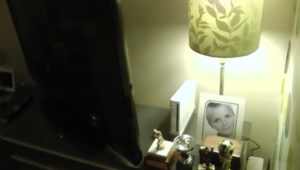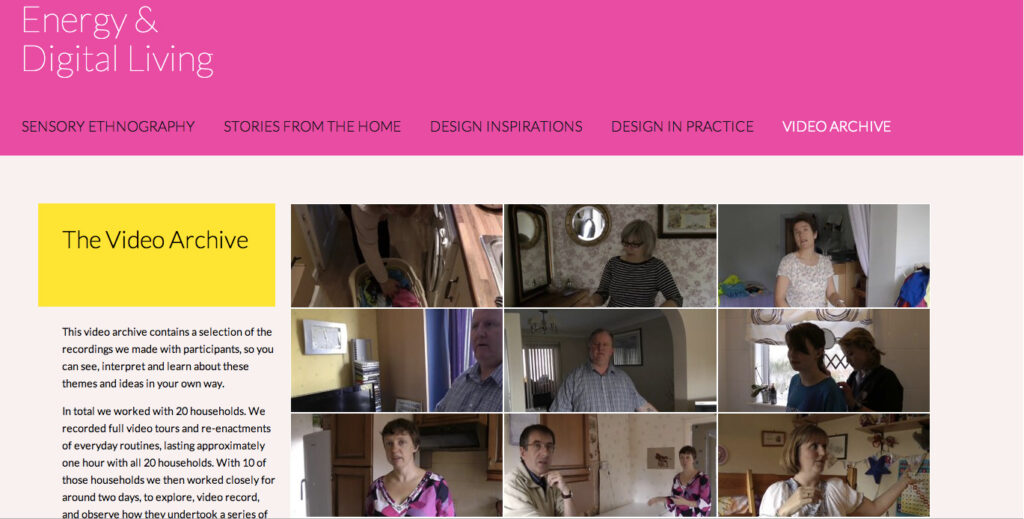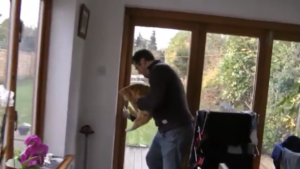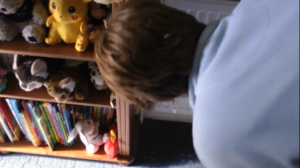As an ethnographer working at the interface of theory and praxis, I frame my research by the need to understand the sensory and digital environments in which we live. Approaching the world through the prism of the digital and sensory offers us a novel and effective way of engaging with contemporary social and environmental challenges – like those relating to energy, safety or privacy – which are also challenges for industry. But why these particular turns to the digital and the sensory? And why now?
Every few years ethnography gets caught up in a new theoretical ‘turn’, a novel way of thinking that casts existing paradigms into critical relief. Sometimes it feels like theory turns so often that, if we took each trend seriously, we would get caught up in whirlpool of abstraction. We have been through the reflexive, gendered and embodied turns of ethnography of the 1980s and 1990s. More recently we’ve seen Christine Hine’s Virtual Ethnography and Ethnography for the Internet, Tom Boellstorff et al’s Ethnography and Virtual Worlds and Rob Kozinets’ Netnography. Fully complicit in this movement are my books Doing Visual Ethnography (2001, 2007 & 2013) and Doing Sensory Ethnography (2009 & 2015). Later in 2015 Digital Ethnography: Principles and Practices – co-authored with my colleagues from the Digital Ethnography Research Centre (DERC) at RMIT University – will be published.
But these turns aren’t just popular fads. True, they are forms of branding to some extent, but they are much more. They force us out of our comfort zone of ethnographic practice as we know it; they invite us to refigure an engaged, applied and future-making approach through new ways of understanding a fragile, uncertain, always changing world. They are carefully debated (and contested) advances in how we understand, and do ethnography in, the world. Moreover, attending to such turns underpins the idea of ethnography as praxis and enables us to make critical contributions back into academic theory building through applied research practice.
In a nutshell, Sensory Ethnography (Pink 2015) is “a way of thinking about and doing ethnography that takes as its starting point the multisensoriality of experience, perception, knowing and practice” and “an approach to the world and to research that accounts for how sensory ways of experiencing and knowing are integral both to the lives of people who participate in our research and to how we ethnographers practice our craft” (2015: 1). Importantly, it goes beyond conventional ethnographic methods of observation and interview, to develop ways to research and understand normally unspoken and often invisible elements of everyday life (including those that involve digital media use). Digital Ethnography (Pink, Horst, Postill, Hjorth, Lewis and Tacchi, Forthcoming) is equally a way of doing ethnography that brings together theory and practice to understand both the digital technologies we use to do research and how digital media are part of the environments that we do ethnography in. It is not online ethnography (although might include it) but, akin to sensory ethnography, is a way of practicing ethnography that is informed by the understanding that we live in a world that the digital is part of. In other words, the digital and sensory environments are important frameworks even for research projects that don’t seem to be “about” digital technology or sensory issues per se. Doing Sensory Ethnography and the forthcoming Digital Ethnography show the immense value of these approaches across a wide range of applied and academic research projects.
While neither sensory experience nor digital media are new themes for industry research (arguably industry research has often been ahead of academic scholarship in aspects of both fields), bringing them together creates an ideal and novel framework through which to investigate perennial problems. Consider the problem of energy demand and how to reduce it. ‘Digital’ and ‘sensory’ probably aren’t the first concepts that come to mind when you think about this topic, but in fact it is an excellent example of how a digital-sensory approach to ethnography can mobilized for applied research.
During 2010–14 I was one of seven investigators in the interdisciplinary Low Effort Energy Demand Reduction (LEEDR) project. I led our three-person video-ethnography team (myself, Kerstin Leder Mackley and Roxana Moroșanu), alongside research teams in design and engineering. The project sought to “situate and understand domestic energy consumption within the context of families’ everyday lives and routines” and develop digital design interventions that would help to reduce energy demand. Our video-ethnography research was framed by an approach that attended to digital media in everyday life and sensory experience and perception and was designed to investigate how and why people consumed energy in their homes and how they used digital media. We tackled media and energy indirectly – taking what some media scholars (like Nick Couldry and Shaun Moores) have called a non-media-centric approach to researching digital media, and what I think of as a non-energy-centric approach to researching energy. We asked, how do people created a sensory aesthetic of home? Or, as one participant told us after showing us his bedtime routine (video 23), just doing what he needed to do.
We took the ethnographic work within LEEDR even further than the parameters of the project itself, developing a platform for online public dissemination, Energy and Digital Living. It articulates our digital-sensory approach to understanding the world in ways that go beyond words, communicating the methodological process, examples of our key findings, the ways we had worked between theoretical and applied domains, and the relationship between ethnography and design. We have also included a series of examples from the design research process and digital design interventions developed during the project. Hopefully our findings and approach will be interrogated, adapted, and used by other researchers and designers for their work.
Working with video enabled us to understanding the sensory and digital environments of home and was a means to communicate about this to other groups in our project and externally. The feel of the home is achieved as part of the messy reality of everyday life. Mess – as discussed by sociologist John Law and by Paul Dourish and Genevieve Bell with particular reference to digital media – is a great metaphor for thinking about how what people do, and the ways the ‘things’ and processes in their everyday lives are configured are always contingent. To understand the contingencies of how our 20 participating households used energy (electricity and gas) for heating, laundry, cooking and more, as well as digital media, to achieve such routines and to make their homes ‘feel right’ we needed to find narratives through the mess. Yet these narratives were not necessarily visible or easily recounted in words alone – the feel of the home is something quite intangible and known in ways that go beyond words. Moreover, media uses tend to be entangled with other activities, not discrete sets of actions that form units we can easily research. The video archive section of Energy and Digital Living offers a selection of clips from our much larger project archive, which is also used on the site to tell the stories of our methodology and findings.
When we used video to explore how digital and sensory elements of home come together we learned about everyday moments and experiences that are normally unseen and unspoken. Bedtime is a fascinating moment at which to see how everyday contingencies come into play (see Pink and Leder Mackley 2015) – as well as a pivotal moment in the day when the home transitions between what we have called the day time and night time home. As participants showed us their bed time routines and we video recorded, we saw how cats, dogs, the positions of light switches and power-points all impacted on the routes they took through their homes, and how the ways in which furniture and power points were arranged through the home played a part in narratives about how and why energy was consumed in the night time home (see videos 28 and 32) or why it could not be consumed at night.
 One participant (Pink and Leder Mackley 2012, section 5.12) explained to us in detail how she prepared her toddler’s bedroom to make a calm bedtime environment with blackout blinds and indoor lighting. When we later toured the downstairs part of her home with her we started to discuss when she used her washing machine, which was in the small utility room underneath her son’s bedroom. Electricity was cheaper at night time, but she couldn’t run the machine at night because its timer was broken—and in any case would not now do it now because her son’s room was above and the boiler was too noisy. Another factor affecting energy use was the washing machine’s location: it was hidden away in the utility room where it was sometimes forgotten for long enough that a load would need to be re-washed. With video and ethnography we can (literally) see how the making of a sensory aesthetic of home makes the way energy is used contingent on the way that specific material, social and technological elements of home come together, in turn making un-economical uses of energy impossible to avoid even in households where people identify themselves through their attention to energy-saving.
One participant (Pink and Leder Mackley 2012, section 5.12) explained to us in detail how she prepared her toddler’s bedroom to make a calm bedtime environment with blackout blinds and indoor lighting. When we later toured the downstairs part of her home with her we started to discuss when she used her washing machine, which was in the small utility room underneath her son’s bedroom. Electricity was cheaper at night time, but she couldn’t run the machine at night because its timer was broken—and in any case would not now do it now because her son’s room was above and the boiler was too noisy. Another factor affecting energy use was the washing machine’s location: it was hidden away in the utility room where it was sometimes forgotten for long enough that a load would need to be re-washed. With video and ethnography we can (literally) see how the making of a sensory aesthetic of home makes the way energy is used contingent on the way that specific material, social and technological elements of home come together, in turn making un-economical uses of energy impossible to avoid even in households where people identify themselves through their attention to energy-saving.
Bedtime is also a moment in the day when getting to sleep is a key objective and priority for most people, so it an interesting time to consider how digital media participate in that process. A sensory digital approach helped us understand a number of elements that affected energy consumption while people slept. The sensory environment of the bedtime moment was created with the assistance of what we have called ‘media presence’ – the feeling of media being active in the home, but not necessarily being actively attended to. Having TV, radio or music on contributed to the sensory feel of bed time along with snuggling into a bed. To ensure that these two elements of bed time could be combined people put digital media on a timer that turns them off once people are on the way to sleeping or asleep. However, timers put devices in standby mode; they are not ‘off’ and so are still consuming energy (Pink and Leder Mackley 2013).
These brief examples show the value of viewing what our participants were doing as part of a more universal aim to make homes ‘feel right’ in particular ways. By considering the relationship between sensory experience and digital media to be integral to these activities, we gained a sense of what people were trying to do and why, in doing so, they might end up consuming more energy than they wanted to. It also informed our understandings of how digital technologies might be engaged in new ways to help people to use less energy. Energy and Digital Living shows how these were played out through design interventions.
There is a pivotal role for ethnographers to play in the applied energy demand reduction space. The ethnography strand of the LEEDR project has also demonstrated that research, intervention and scholarship that attends to the question of energy demand through the intersection between digital and sensory ethnography can produce a set of novel insights for this field.
Taking on board new theoretical turns – understanding shifts in the ways everyday worlds are constituted – is fundamental to the advancement of ethnographic praxis. This willingness underpins the ways in which I seek to develop active, engaged ethnography that can participate in public debates and in making change and futures through applied practice and public scholarship. It is ethnography that is thoroughly engaged in questions and issues that are relevant in the world beyond scholarship, that has capacity and potential to make interventions in the world, but is underpinned by the theory-building and critical perspectives that emerge from disciplinary debates.
My work is also united by a core methodological component; I am continually probing to know more about how we can know about the world, how we can best engage different ways of knowing to produce new understandings, insights and change. This methodological core is equally as important as substantive knowledge and insights. It is only through continuing to interrogate ethnographic practice, advancing how it is undertaken and what it can do, and bringing it together in novel configurations with other practices, disciplinary theories, new technologies and other ‘things’ in the world, that we will become better ethnographers and more effective future-makers.
I started this post with the point that ethnographic practice is incrementally inflected through a seemingly endless series of ‘turns’ – and they do not end here! There is more work to be done in developing the relationship between applied ethnography, future-making and design. The Design+Ethnography+Futures (D+E+F) programme of research I have developed with Yoko Akama at RMIT University advances this question. D+E+F is also an incubator for questions about how theory, ethnography, design and intervention can meet to generate understanding and future-making in the world. It enables us to approach these core issues that would not necessarily be played out in projects that are narrowly solutions-based and to undertake applied projects in an informed way.
References
Boellstorff T, Nardi B, Pearce C and Taylor TL (2012) Ethnography and Virtual Worlds: A Handbook of Method. Princeton: Princeton University Press.
Couldry N (2012) Media, Society, World: Social Theory and Digital Media Practice. Cambridge, UK and Malden, MA: Polity Press.
Dourish P and G Bell (2012) Divining a Digital Future. Cambridge: MIT Press.
Hine C (2000) Virtual Ethnography. London: Sage.
Kozinets RV (2010) Netnography: Doing Ethnographic Research Online. London: Sage Publications.
Law J (2004) After Method: Mess in Social Science Research. Routledge.
Moores S (2012) Media, Place and Mobility. London and New York: Palgrave Macmillan.
Pink S (2013) Doing Visual Ethnography, 3rd edition (2001 1st edition, 2007 2nd edition). London: Sage.
Pink S (2015) Doing Sensory Ethnography, 2nd edition (2009 1st edition). London: Sage.
Pink S, H Horst, J Postill, L Hjorth, T Lewis and J Tacchi (Forthcoming) Digital Ethnography: Principles and Practice, London: Sage.
Pink, S. and K. Leder Mackley (2015, published online first 2014) ‘Moving, Making and Atmosphere: Routines of Home as Sites for Mundane Improvisation’ Mobilities.
Pink, S. and K. Leder Mackley (2012) ‘Video as a Route to Sensing Invisible Energy’ Sociological Research Online, February 2012, http://www.socresonline.org.uk/17/1/3.html
Pink, S. and K. Leder Mackley (2013) ‘Saturated and Situated: Rethinking Media in Everyday Life’ Media, Culture and Society 35(6): 677-691. doi 10.1177/0163443713491298.




0 Comments